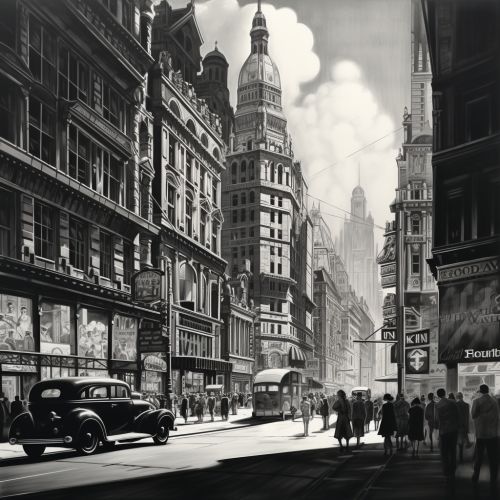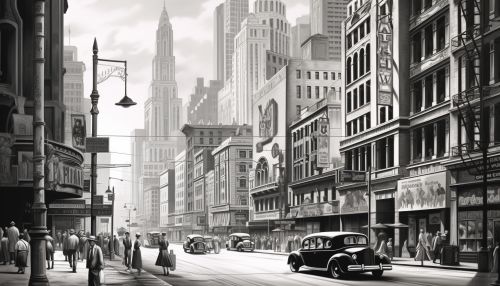Age of Anxiety
Historical Context
The term "Age of Anxiety" is often used to describe the period following World War II, a time marked by widespread feelings of fear and uncertainty. This era, roughly spanning from the late 1940s to the early 1960s, was characterized by the rise of the Cold War, the threat of nuclear annihilation, and profound social and cultural changes.


Origins
The phrase "Age of Anxiety" was popularized by the British-American poet W.H. Auden in his 1947 poem of the same name. Auden's work, which won the Pulitzer Prize for Poetry in 1948, explores themes of isolation, fear, and the search for faith and meaning in a rapidly changing world. The poem's depiction of a society gripped by anxiety and uncertainty resonated with many readers, and the term "Age of Anxiety" soon came to be used more broadly to describe the post-war era.
Societal Impact
The Age of Anxiety had a profound impact on society and culture. The fear and uncertainty of the time led to a widespread sense of disillusionment and a questioning of traditional values and beliefs. This was reflected in various aspects of society, from politics and philosophy to art and literature.
Politics
In the political sphere, the Age of Anxiety was marked by the rise of the Cold War and the threat of nuclear annihilation. The ideological conflict between the United States and the Soviet Union, along with the development of nuclear weapons, created a pervasive sense of fear and uncertainty. This led to a climate of suspicion and paranoia, as seen in the Red Scare and the widespread fear of communism in the United States.
Philosophy
The Age of Anxiety also had a significant impact on philosophy. The existentialist movement, which emphasizes individual existence, freedom, and choice, gained prominence during this time. Existentialist philosophers such as Sartre and Camus explored themes of absurdity, despair, and the meaninglessness of life, reflecting the widespread feelings of anxiety and disillusionment.
Art and Literature
Art and literature of the Age of Anxiety often reflected the feelings of fear, uncertainty, and disillusionment that characterized the era. In literature, this was seen in the works of authors such as Salinger and Orwell, whose works explored themes of alienation, social criticism, and the loss of individuality. In the visual arts, movements such as abstract expressionism and pop art emerged, reflecting the societal shift away from traditional norms and values.
Legacy
The Age of Anxiety left a lasting impact on society and culture. The societal changes and cultural shifts that occurred during this time continue to influence contemporary politics, philosophy, art, and literature. Moreover, the term "Age of Anxiety" is still used today to describe periods of widespread fear and uncertainty, demonstrating the enduring relevance of this historical era.
